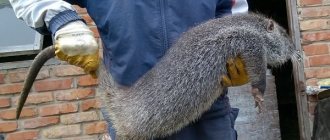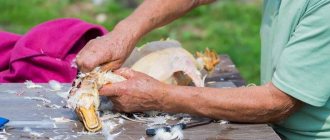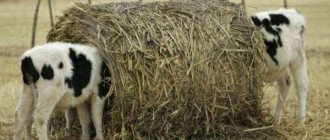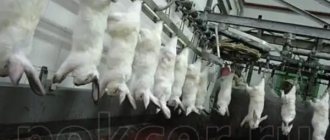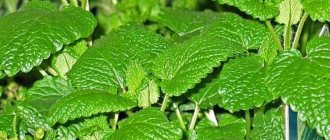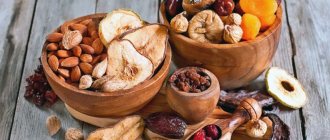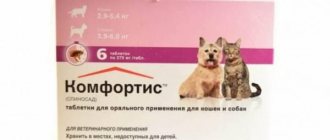Raising goats is quite profitable. This business was profitable in the past and remains so to this day. Such a pet is quite unpretentious in keeping. From them you can get milk, meat and skins. If you breed and comb downy breeds, you can also get quite a lot of valuable wool. It is worth noting that there are also species of animals that are used exclusively for meat. They have differences from other types of goats. The difference mainly lies in the round structure of the body, as well as the small amount of milk at milk yield.
The animal meat product is highly valued among gourmets; in addition, it is very healthy in its composition. Meat contains a sufficient amount of amino acids and elements that are very easily absorbed by the human body. Those who raise goats know very well that their meat contains valuable vitamins. But not all people know what cutting methods are available and how to properly cut a goat in order to obtain a product without a specific odor. This material will provide detailed information on this issue.
Optimal timing
Usually a dairy goat is not killed, but kept for 7-9 years. After all, the older the animal, the more milk it gives (from 2 to 7 liters per day). Every year, sometime in the fall, goats are mated. Pregnancy lasts 5 months. In the spring, kids are born. It is them, though fattened and grown, who are sent to slaughter.
It is advisable to castrate young goats at the age of 1-2 months, for example, using an elastic band. Then the meat will not have a specific taste and smell. For the first 3 months, newborn goats are milk-fed. Closer to summer, they are gradually transferred to plant foods.
Animals can graze on pasture throughout the warm season. During this period of the year, feed costs are minimal. In summer, goats eat only grass. Additionally, they can be given finely chopped vegetables (carrots, pumpkin, beets). To quickly gain weight, they are fed small amounts of grain mixtures (barley, oats, wheat, corn). With the arrival of the first frost, animals can be sent to slaughter. By this time, the weight of the goat should be at least 15 kilograms. There will be 2 times less clean meat after slaughter. Animals are usually slaughtered at 6-12 months of age. It is not recommended to keep goats longer. After all, the older the animal, the tougher the meat.
Expert opinion
Zarechny Maxim Valerievich
Agronomist with 12 years of experience. Our best country expert.
Ask a Question
Important! Breeding males from whom they plan to produce offspring are not sent for slaughter. Old animals are killed at any time of the year. Before slaughter, the health of the goat must be checked. It is forbidden to kill for meat an animal that is suffering from an infectious disease. It is either treated or disposed of in special crematoria.
Castration of goats
In the Danube provinces, the meat of young goats is more than six times higher than the value of lamb, from which the taste is almost no different. Professor I.V. Sinitsyn is absolutely right when he says that “if the housewives of our capital cities learned to cook oriental dishes and generally knew how to cook lamb and goat meat well, then this meat would very soon become loved in the North of Russia. It’s not about the lamb and its smell, but about the ability to handle it in the kitchen.”
It should also be noted that goat meat is a dietary product.
Horns. Guts. Skin
Rubber rings for castrating rams and docking lambs' tails are used with stretch pliers.
Methods of slaughter
Goat breeders who raise goats for milk rarely decide to stab, that is, kill, their animals themselves. Usually a specially trained slaughterer is invited for such a procedure. This person works according to sanitary rules, that is, he requires a certificate from a veterinarian stating that the animal is completely healthy.
You can kill a goat yourself. There are two main methods of slaughter: with and without stunning. The animal is stunned with a hammer blow to the frontal part (above the eyes). The stunning tool must weigh a minimum of 2.5 kilograms. The animal, stunned by the blow, is bled (the throat is cut while suspended by the hind legs). You can kill a goat without first stunning it by cutting its neck vessels.
The dead animal must be hung from the crossbar by its hind legs so that all the blood drains out of the carcass.
Common methods of slaughtering goats at home:
- Stunning with a hammer to the head followed by cutting of the cervical arteries.
- Without preliminary stunning, in a horizontal position. The animal is laid on its side and its legs are securely secured with a rope. In this position, the arteries in the neck are cut.
- Without preliminary stunning, in a standing position. The animal is pinched between the legs. With the left hand they lift the head by the horns or chin, with the right hand they cut the throat.
See also
How to choose the right goat and popular breeds, productivity tableRead
Important! If a goat is killed without first stunning it, its legs must be tied tightly or held tightly while it bleeds to death for several minutes. In a state of agony, the animal may break free and run around the yard with its throat cut.
Tips for beginners
- It is better to slaughter goats in the cold season. The cold will help avoid possible problems with the safety of the product. In addition, it is in winter that goat meat will be tastier and fattier.
- Before slaughtering yourself, it is better to use the services of a master. This will allow you to clearly familiarize yourself with the slaughter process from an experienced person. Thus, you can remember the main features of the process, and then you can kill and butcher animals yourself. If there is little experience and knowledge, then the work will be difficult, and the animal may die for a long time and in agony. Also, if slaughtered improperly, meat may develop an unpleasant odor and its taste will be spoiled.
Share
Preparation for the process
Before slaughtering a goat, you must carefully prepare for the procedure. In the last month, it is recommended to give animals higher quality food, more finely chopped vegetables and grains. By the time of slaughter, the goat should have recovered slightly. It is advisable that an animal being sent for slaughter be examined by a doctor. The goat must have all vaccinations. Vaccination is usually carried out at 3 months of age. Animals are given antiparasitic drugs once a quarter. The last deworming treatment is carried out 3 weeks before slaughter.
In recent days, it is forbidden to expose the animal to stress. This deteriorates the quality of the meat. The day before slaughter, the goats are stopped giving food. They are kept on the same water all day long. 3 hours before slaughter, animals stop drinking.
Before killing a goat, it is thoroughly washed with a hose. Fresh meat can absorb foreign odors, which reduces its taste.
It is necessary to carefully prepare the place where the slaughter will be carried out. All tools should be at hand. To bleed the carcass, hang it by its hind legs from a crossbar or on a tripod with a winch. For blood and meat you need several basins or pans. The cutting of the carcass is carried out on the table. The place and all objects where the slaughter will be carried out must be washed well with clean water so that the meat does not absorb the odors of manure or detergents.
Useful properties and features of goat meat
Goat meat is highly valued by nutritionists, and there are many reasons for this: low fat content, virtual absence of cholesterol and digestibility by the body. For these reasons, the product is the basis of dietary nutrition for the elderly, children, as well as those who suffer from problems with the gastrointestinal tract or who simply want to lose weight.
Among other things, goat meat contains a complex of essential amino acids that stimulate metabolic and regenerative processes. This product is rich in vitamin complexes B1 and B6.
Doctors recommend goat meat as a means of preventing diseases of the cardiovascular system, and also as a regulator of hemoglobin levels in the blood. Another advantage of goat meat is safety; goats do not suffer from most of the diseases common among other livestock.
As for taste, you need to remember that this is far from veal. The meat has a specific smell (not as strong as lamb) and an unusual taste. For this reason, goat meat is not very popular. Due to the lack of fat, the meat is tough and will take quite a long time to cook. However, the younger the kid was, the fewer such problems will arise with the product.
What tools are needed
For slaughter you will need the following tools:
- a sharp knife 25 cm long for cutting cervical vessels;
- a well-sharpened knife 15 cm long for removing skins;
- oilcloth or plastic film for bedding;
- ropes for securely securing the animal;
- crossbar or tripod for hanging the carcass;
- basins, plates and pots for blood, meat and entrails;
- rags and hand wipes;
- clean water for washing the intestines.
How to slaughter a goat
You can kill a goat or goat in any convenient way: by stunning or by immediately cutting the neck blood vessels. You can carry out the slaughter yourself. True, for the first time, before slaughtering a goat, it is advisable to call another person for help.
The easiest way to slaughter an animal is this way:
- put a rope around your neck;
- tie a goat to a tree;
- hit the back of the head with a hammer;
- remove the rope from the neck;
- cut the cervical arteries to allow blood to flow out;
- while the heart is pumping, hang the animal by its hind legs to the crossbar;
- cut off the head so that the blood drains better;
- Place a basin below, about 2 liters should flow out;
- After 2 hours, when the blood has completely drained, remove the skin from the carcass.
See also
Instructions for use and dosage of Oxytocin, when to give to a goat and analoguesRead
The skin is removed from the carcass in the following order:
- wrap the neck with rope and cling film so that the skin does not get stained with blood;
- make cuts on the hind legs around the hock joints;
- cut the skin on the inner line of the thighs through the anus;
- trim the skin near the tail;
- they tighten the skin, trimming the meat, fat and ligaments with a knife;
- After skinning, the canvas is cut on the belly and left spread out on the table.
Important! After skinning, they immediately begin cutting up the carcass. This procedure is carried out while the goat is hanging on the crossbar. Cutting usually takes one hour.
Preparatory stage
It is not recommended to feed animals during the day before slaughter, but they can be given water, as water will give the meat a tender and juicy taste. A full intestine is difficult to remove from the peritoneum, and it can burst and its contents spill onto the meat. Blood doesn't drain well from such a carcass.
Before you catch an animal or bring it to a specially designated area, you need to take care of the following:
- the place where the animal will be slaughtered must be prepared in advance; for this, as a rule, a secluded corner is chosen;
- a crucifix is prepared to hang the carcass; it must be arranged so that the hind legs of the animal are spread out and firmly fixed;
- The most important thing for slaughtering any livestock, including goats, is a knife, therefore, you need to make sure in advance that it is sharp, like a blade, and that the handle does not slip and is comfortable to grip.
Carcass cutting
You can cut the carcass in this order:
- carefully make a small incision on the stomach along the white line so as not to puncture the stomach;
- carefully pull out the bladder and genitals;
- the rectum and stomach are separated from the spine and all the gastrointestinal organs are pulled out;
- the intestines are placed in one bowl, and the liver in another;
- remove the liver, carefully separating the bile from it;
- last of all, the heart, trachea, remains of the esophagus and lungs are removed;
- allow the meat to cool;
- From a hanging carcass, the front legs with shoulder blades are cut off separately, then the sides with ribs;
- the spine is separated from the hind legs;
- at the end the thighs and legs are cut off, leaving the hooves.
Pieces of meat are placed in a pan. Then it is cut up on the table on a board. The meat is left in a cool room (4-5 degrees Celsius) for fermentation for 24 hours. When completely cooled, use it for cooking or put it in the freezer. The intestines are cleaned and washed with water if they are going to be used for sausage. The stomach is also cleaned, and then soaked for a long time in a salty solution.
Important! The carcass is not washed during cutting. The blood is wiped off with rags or napkins. The health of the goat is judged by the condition of the internal organs. The meat usually has a pleasant pale pink color. Healthy organs should not have tumors, white spots, or mucus.
Cutting and skinning
To remove the skin, you will need to resort to the instructions provided, which will make the process easier and do everything correctly. You will need to start from the front of the animal. Namely from the legs and neck, where the incisions are made:
- Next, you should cut the hind legs in a circle and make a transverse cut, going around the anus between them. This work must be done carefully so as not to damage internal organs;
- After this, you need to make a cut from the joint of the front paw through the entire chest part to the same part of the other paw;
- Now an incision is also made from the throat, passing the belly to the tail.
The skin must be removed in its entirety, gradually and carefully pulling it off the body. Sometimes you can help with a knife. Especially where there are strong ligaments. At this stage, it is very important not to damage the fur, and also not to leave pieces of meat and fat on the skin.
As you can see in the video, the matter is not simple and can be compared to an entire art.
Next, when the skin is removed, you will need to bandage the esophagus. Then the legs are cut off. Some people prefer to fry them and leave them, and some just feed the legs to the dogs. Limbs are cut off at the joints. After this, you will need to completely cut the muscles and remove the anus.
When cutting the abdominal part, you will need to be very careful not to damage the rectum. By cutting the belly, the intestine is removed. After this, the stomach must be moved a little to the side and the esophagus removed. Next, the intestinal ligaments are torn. Only now can all other organs and viscera be removed from the abdominal cavity. By the way, you will need to prepare a bowl or a convenient container for them.
Then the carcass is wiped with a towel and any remaining blood is removed from the meat. Incisions must be made under the costal portion so that the body can be divided into anterior and posterior portions. The cutting process is shown in detail in the video.
Depending on how the rib part will be used further, it can be left in its original form or cut into the necessary parts. Next, only the vertebra and hind legs will remain. The spine is cut into pieces at the joints, and the hind legs can be cut into pieces or left whole. That's the whole process of cutting up a goat carcass. If you follow the technology and the sequence of work, you can cut the carcass quickly enough and get high-quality meat, without any foreign smell.
What to do with the skin
The goat has a large and beautiful skin from which you can make a rug for the floor. Immediately after skinning, it is laid out on the table with the wool down. The skin is cleaned with a knife to remove any remaining meat, fat, or blood. Then leave it for 2 hours to cool down. Sprinkle the cooled skin generously with salt. One kilogram is enough for one skin. It is left in this state for 5-7 days. Then the salt is shaken off, and the skin is dried in a straightened form. Dry it in a cool room for 2 weeks.
After drying, soften in an aqueous solution of salt, soda, formaldehyde. This operation is called unwinding. Then fleshing is carried out, that is, the softened subcutaneous layer is removed with a knife. After which the skin is washed in water with powder. Then they do pickling, that is, they soak the skin in a solution of salt and vinegar.
After this stage, it is washed in clean water. The leather is softened by the tanning process using special preparations. Before drying it is softened with fat. You can simply salt the skin and hand it over to specialists for dressing.
National characteristics of animal slaughter
I would like to immediately note the fact that there are no uniform world standards and rules for the slaughter of animals. Each country has its own rules and traditions. Most countries still do not have laws regulating the slaughter of animals. For example, in most Arab countries you can buy 2 types of animal meat on the market:
- Produced in a modern slaughterhouse with full and partial mechanization.
- Produced in some nearby butcher shop in complete unsanitary conditions.
In some countries, the slaughter of animals is regulated by religious dogmas: Jewish kashrut and Muslim halal.
There are countries where there are still prejudices about human involvement in the slaughter process . Thus, in Japan, only at the beginning of the last century was the ban on the slaughter of animals for food production lifted. Moreover, to work in slaughterhouses, special people were hired whose previous work was related to death: undertakers and executioners.
A number of countries have laws that prohibit the killing of certain types and classes of livestock, as well as the consumption of their meat. For example, in India it is prohibited to kill cows. On this basis, conflicts have repeatedly flared up in the country, since cows are not considered sacred animals in all states.
A ban on cow slaughter also exists in Nepal.
In the United States, several states have bans on the consumption of horse meat . However, it is not prohibited to slaughter horses for exporting their meat to other countries. In addition, horse meat can be used as a raw material for the production of pet food.
